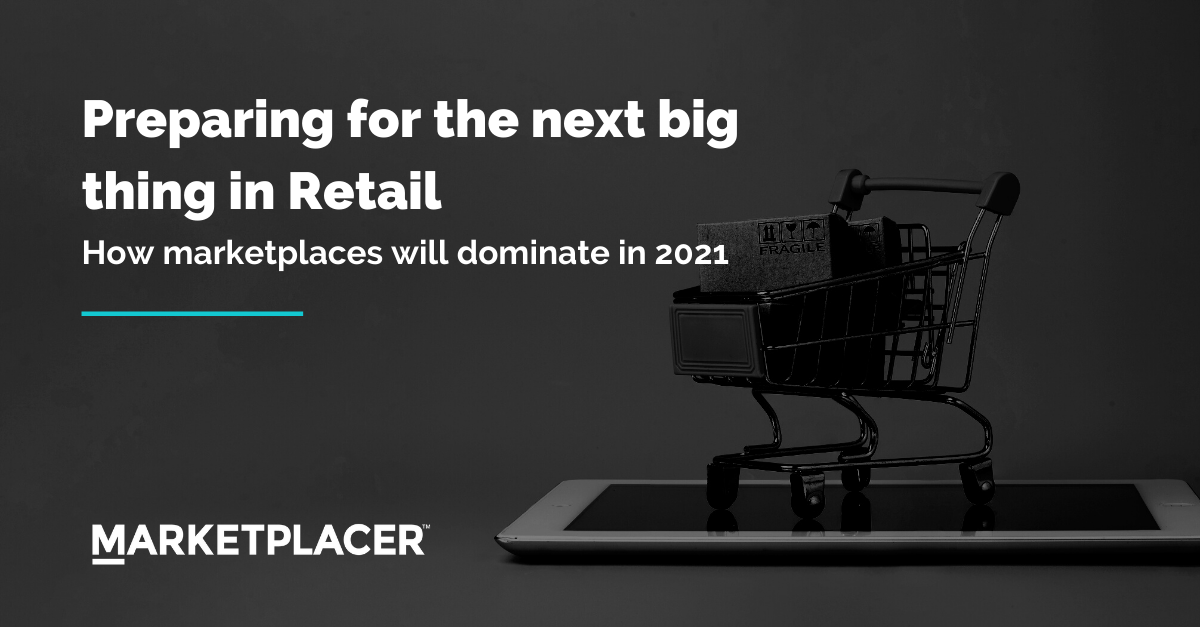It’s been an eventful past year for retailers. When lockdowns, social distancing and retail closures brought the world to a virtual standstill, consumers appetite for online shopping skyrocketed – crashing websites and sending supply chains into a spin. Retailers with existing eCommerce sites flourished. Others poured their energy into the speedy rollout of online stores. Some busied themselves developing innovative new ways of meeting consumer’s needs. The online bonanza saw many brands – small and big – report record-breaking sales while consumers developed new online purchasing habits that saw even the older generations embrace online shopping with gusto.
As the dust begins to settle on ecommerce’s unpredictable yet profitable year, and retailers look to continue the momentum, the question now is – what’s next for global online commerce?
According to Shopify’s global trend report, the future lies in online marketplaces.
A quick marketplace refresher
Unlike a single-seller eCommerce store, a marketplace brings together several buyers and sellers in a single online platform that allows customers to browse and shop from a wide assortment of offerings under one roof. A marketplace can be vertical-focused, offering a single item – such as car parts or activewear – from a bunch of retails sources. Or, it can be horizontal, offering access to products grouped around an interest such as cycling or gardening. Or it can be global, giving consumers access to almost infinite products – think Amazon or Tmall.
Because of the broad range of marketplace types, it’s likely you’ve visited a marketplace before. In fact, marketplaces attract half of all global eCommerce sales* and the top 100 marketplaces rake in nearly $2 trillion in annual sales combined*.
* Shopify (2020), The future of eCommerce in 2021 [ONLINE]. Available here.
For brands, this alone is compelling stuff. But there’s more to marketplaces than profits alone.
Let’s explore the emerging trends and advantages of the burgeoning marketplace movement – as revealed by Shopify Plus in their annual report on global ecommerce trends*.
Brand-building opportunities
“In a world where marketplaces dominate, and search is often unbranded, brand building has never been more important”
Brands have long been concerned that their unique perspective is lost in stark white product pages and brandless searches. But as marketplace owners recognize that a soulless platform packed with non-differentiated products is no longer inspiring merchants, marketplaces are evolving. Product pages are being brought to life with local, personal content that differentiates and supports immersive, brand-rich experiences. And in response, merchants are beginning to take notice and revaluate the branding potential of a marketplace listing.
Reduced admin with real-time product syncing
“Creative assets should automatically sync across channels and pages”
Once dominated by repetitive manual processes and mistake-riddled spreadsheets, updating product information was an unwieldy task. Today, marketplaces are moving towards APIs and product experience dashboards to offer seamless, real-time syncing that saves considerable headaches on the merchants side.
Broadened, personalized customer base
“While customer data might be harder to come by on marketplaces, you can combine marketplace and other channel data to discover themes across collections and categories”
Retailers are always in pursuit of new ways to reach more customers. Attracting the right customers to a brand’s eCommerce site takes effort and money. Marketplaces attract customers by search not brand, ensuring shoppers interests are reflected in the products and services on offer – giving a brand additional access to potential customers, while acting as a gateway for brand discovery. To extend this advantage, marketplaces are combining merchant and other channel data to unearth insights to better target product pages and improve performance.
Scale at speed, with help
“Marketplaces help smaller businesses fulfill orders more efficiently”
Marketplaces have global reach that smaller brands can leverage to scale at speed. But that’s not all a marketplace can offer a merchant. Merchants are also beginning to streamline inventory management and delivery times by leaning on the fulfillment knowledge shared by marketplaces. This not only helps to boost the delivery times and processes of merchants, it also provides a more consistent customer experience for marketplace shoppers.
Be more human with personalisation
“Personalization, whether it’s delivered by a human or an algorithm, is too lucrative to ignore.”
We’re starting to see customization and personalization options for both services and products across a number of marketplaces. From personalized products to one-of-a-kind experiences, marketplaces are starting to build up the necessary skills and capabilities to make personalisation more personal.
Jump on the marketplace train…
Download your copy of The Future of eCommerce: Shopify Plus’ annual report on global ecommerce trends to learn what 25+ industry leaders, investors, and commerce experts predict to be the top 5 trends shaping commerce in 2021.
To learn more about Marketplacer’s pre-built, out-of-the-box, platform get in touch today. It’s far easier than you might think – and the opportunities truly are endless.





